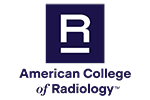Chest Pain-Possible Acute Coronary Syndrome
Cardiovascular disease is the leading cause of death in the United States. Acute coronary syndrome (ACS) is most often caused by plaque rupture or clot formation in the heart’s arteries, which leads to sudden drop in blood flow to the heart. Symptoms may include chest pressure at rest or during light activities. Quick diagnosis and management are key to restore blood flow.
Chest x-ray may be used as the initial imaging test to help decide if further imaging tests are needed. Other imaging tests include coronary angiography and specialized CT, MRI, and ultrasound (US) tests, some at rest and some with exercise. These look at the heart and how it functions. They are described next.
In individuals with chest pain who are at low to intermediate risk of ACS, CT angiography (CTA) coronary arteries with intravenous (IV) contrast (CT of the heart specifically looking at the coronary arteries) is appropriate. A single-photon emission computed tomography (SPECT)/CT is also appropriate; this is a special type of CT performed at rest and during stress to look at how the heart is functioning. Ultrasound echocardiography transthoracic stress (echocardiogram after exercise) is also usually appropriate and allows direct visualization of the heart while it beats. An MRI with and without contrast looking at heart function may be appropriate.
For individuals who are high risk of ACS, coronary arteriography is usually appropriate. This is a test where a very thin tube catheter is put into an artery in the thigh, neck, or shoulder and threaded up to the heart. Dye is injected through the catheter to help see the arteries in the heart. US echocardiography transthoracic resting, CTA coronary arteries with IV contrast, MRI heart function and morphology without and with IV contrast, SPECT, or SPECT/CT MPI rest and stress may also be appropriate.
This page was reviewed on December 15, 2021


